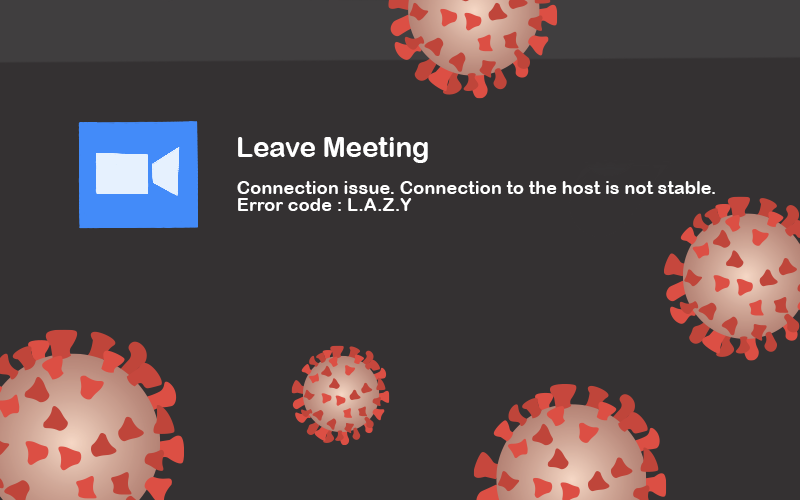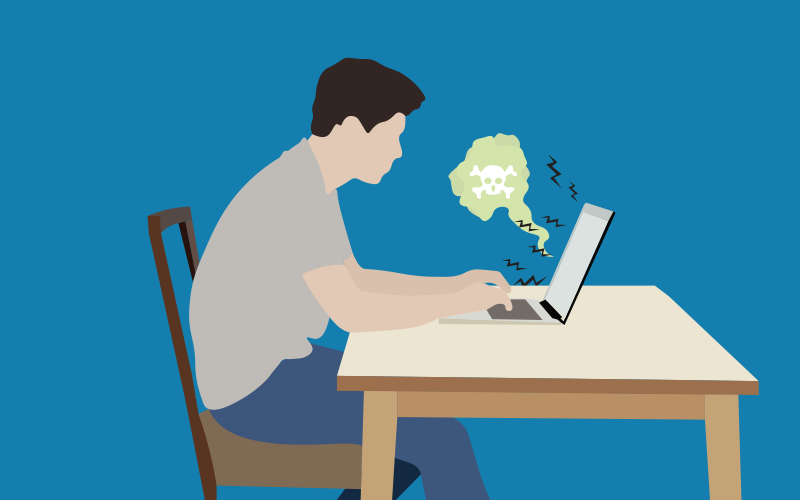It was mid-March, I was a senior in high school, and Coronavirus cases were on the rise. Everyone was glued to their phones waiting for the latest announcements from the governor, event cancellations, and texts sharing bad news that your distant relative was sick. It all felt so surreal, like pandemics were the latest trend, nothing more. We talked about infection rates and confirmed cases like they were the score of an NBA game.
Many of my classmates and I did not actually think the coronavirus was something to worry about, let alone something that would last for months. Apart from the news, our lives were pretty much the same. I still took my morning nap on the bus ride to school. I still chatted with my friends during lunch about nothing and everything. And I still stared at the clock during class, counting down the minutes I had left to sit through yet another dull lecture. So just like at the end of any other day, everyone huddled at the classroom door, anxiously waiting for the daily race to the parking lot to begin. Seconds before the end-of-day bell rang, my teacher made a prediction about the weeks to come.
“I bet that we’ll be off from school for a week or two at the most. And if it’s two weeks, it’s just to be safe.” A year later, I’ve graduated high school and started college, all online.
Switching to online school was a big adjustment, to say the least. Not all of my teachers were comfortable using computers, not to mention teaching on them. Inconsistent internet connection among other technical difficulties certainly did not help the transition. In the beginning, classes sometimes had to be canceled or end early due to crackling connections and teachers who couldn’t unmute themselves.
In a normal year, seniors wear sweatpants as a badge of honor and receive accolades from their friends whenever they are late to school. In a year of online classes, those actions were commonplace. Instead, seniors would skip class on the account of “internet problems” which was code for “I want to take a nap.” My friend should have won an Oscar when he just left the video call and didn’t come back when our teacher asked him a difficult question. The next day, he gave a long monologue of false excuses. In short, he was having “internet problems.”

Teachers gave lots of assignments for the sake of having assignments, quintessential high school events like prom were canceled, and the trivial, yet fun chit-chat that came with lunch and walking from class to class disappeared. Yet through it all, my grade, the class of 2020, became more of a family. Even though most of us kept our cameras off, there was comfort in seeing familiar names on our computer screens. We were all in different places, thinking different thoughts, but we all came together to join our daily video calls. We all knew that if we needed someone to talk to — because at some point it gets a bit unhealthy to share all your hopes and dreams with your dog — you could text a friend or email a teacher. We may have rarely seen each other’s faces in class, but all we needed was a name in the corner of the screen to know that we had each other’s backs during an odd time in our lives.
My teachers made extra efforts to make up for missed memories as a result of online learning. My Spanish teacher took advantage of teaching from home by incorporating her hobbies into our lessons. I already knew that she loved to cook since she would make meals for our class occasionally, but I had never seen where, or how, the magic happens. So one day, instead of a typical class, she taught us how to make Spanish omelets, or tortillas españolas, all while speaking Spanish. I wasn’t sure how this would go, considering she hadn’t even figured out how to angle her camera yet — as much as I like looking out the window during class, it would’ve been nice to see who was talking. It ended up being my favorite Spanish lesson, with in-person classes included, of my high school experience because we weren’t just sitting at a desk. Together, we all scrambled around our kitchens, during a lesson filled with happy chaos. I caught glimpses of my classmates’ sprints across the screen as we tried our best to listen to the instructions, explain to our teacher how to adjust her camera, and cook all at the same time.
We did a couple more of these fun classes, but before we knew it, it was time for graduation, three graduations actually. To cover all of their bases, my school held a drive-by graduation in front of the school, a video graduation that was posted online, and a social-distanced graduation later in the summer. I only watched the video graduation because that was all I needed to feel like a high school graduate. On the same couch where I took classes for the past few months, my family sat shoulder-to-shoulder, eagerly awaiting my face to be shown on our television, and my graduation to be official. We talked over the boring speeches and gossiped about my classmates as their names were announced. When my name was said, my family cheered as I strutted across the living room in my pajamas. It didn’t matter that I wasn’t wearing a cap and gown, high school was over.
The next day, I was already daydreaming about college. I still had months until my first term began, but it was something to look forward to. I pictured myself strolling through campus, waving to new friends, and stepping into the city lifestyle. Sometimes I saw myself with a completely new look, a nose ring or dyed hair perhaps, because if I’ve learned anything from the movies and TV, college is the place to reinvent yourself. Whenever I think about college, I remember the episode of Freaks and Geeks where Barry visits home and shares how tremendous college is compared to high school. “When you get to college, it’s funny, it’s like all that high school stuff disappears,” Barry says. “When you get there, it’s like no one knows that you were an athlete, or that you were a burn-out. It’s like a fresh start. You can be whoever you want to be.” I was ready for this new chapter, ready to embrace who I want to be. But, all of these daydreams came to a screeching halt when I got the email: my first term of college was going to be online.
Remote classes worked during high school, but we already had an established community. It was easy to stay in touch with friends in high school because we had spent time together face-to-face for three and a half years. But, how could I feel comfortable in a sea of black squares with names I can’t put a face to?
On the first day of classes, I “moved into college” by setting up a table in the corner of my living room. As I logged onto my classes, my clammy hands slid around my keyboard and there were more than a few butterflies in my stomach, it felt as if the annual migration of monarchs was taking place. The new-school jitters were as expected as I balanced making a good impression and seeming relatable. I wanted to look nice on my first day, but within the realms of Zoom fashion standards. I put on my sweatshirt, took off my sweatshirt, put on my sweatshirt, took off my sweatshirt, and on and off and on and off. I didn’t want to look ratty, just a perfect amount of disheveled. After going back and forth too many times to count, I stuck with the sweatshirt. It was the first day of classes, so no one would know that I had been wearing it every day for the past week. By the end of my first lecture, most of my concerns had dissipated. I realized that everyone was in the same boat, worried about meeting people for the first time online. I hadn’t anticipated starting college this way, and I’m sure many of peers hadn’t either.
So as the world encouraged us to wear masks, my classmates and professors only became more open and personal. In-person, we would have greeted each other with our public facades, only volunteering facts about ourselves that make a good impression. Online, we caught a glimpse of everyone’s personality and home life. You could hear kids squealing in other rooms, see family photos hanging on the wall, and look at bedrooms so messy that I could smell them through the computer screen. The gallery of boxes on the video calls was a colorful collection of stories and unique perspectives. Some people shied away from this level of openness, and used fake backgrounds or kept themselves muted as often as possible, but many embraced the connectedness.

It seems counterintuitive, but sometimes turning our cameras off made us more connected than keeping them on. During my English class Zoom calls, my professor often asked everyone to turn on their cameras if possible, so I could see my peers in their pajamas barely staying awake as we reviewed the specifics of MLA format. One day, we were discussing a memoir that everyone had to read and my professor posed the question, “What did you like about this memoir?” No one answered. Instead, everyone turned off their cameras, almost synchronized, in hopes of not having to answer the question. I’m not telepathic, but I knew that I, personally, didn’t want to answer that question for one simple reason, I didn’t like the memoir in question. In a classroom of stares, someone would have felt pressured to spew some gibberish just to answer the question, but with our black boxes shielding us, we could be honest and not say a word. This simple click of the button was almost as bold as leaving the call due to “internet problems.” In some ways it was even more brazen because as soon as another question was asked, cameras turned back on, one by one, and no one had to hide behind a false excuse.
I never expected to end high school or start college online, but even though it’s not the fun transition I expected, it is far from the worst experience. Of course, there have been days where it seems easier to just close my laptop and claim I had “internet issues,” but don’t you have that feeling when you’re in-person too, like you’re just done for the day? In lots of ways, online school is exactly the same as a normal school. There are still long lectures and late nights before exams. In breakout rooms on Zoom, sometimes your group is chatting nonstop and other times there is dead silence because just like in regular times, some people don’t mesh well. There are also perks of taking classes at home like being able to leisurely cook a Spanish omelet for breakfast instead of rushing to the dining hall. In my chamber of isolation, living through a screen, I still managed to transition into a new school, with completely new people. Now, I’m already halfway adjusted to the college lifestyle for when I finally move onto campus. •




